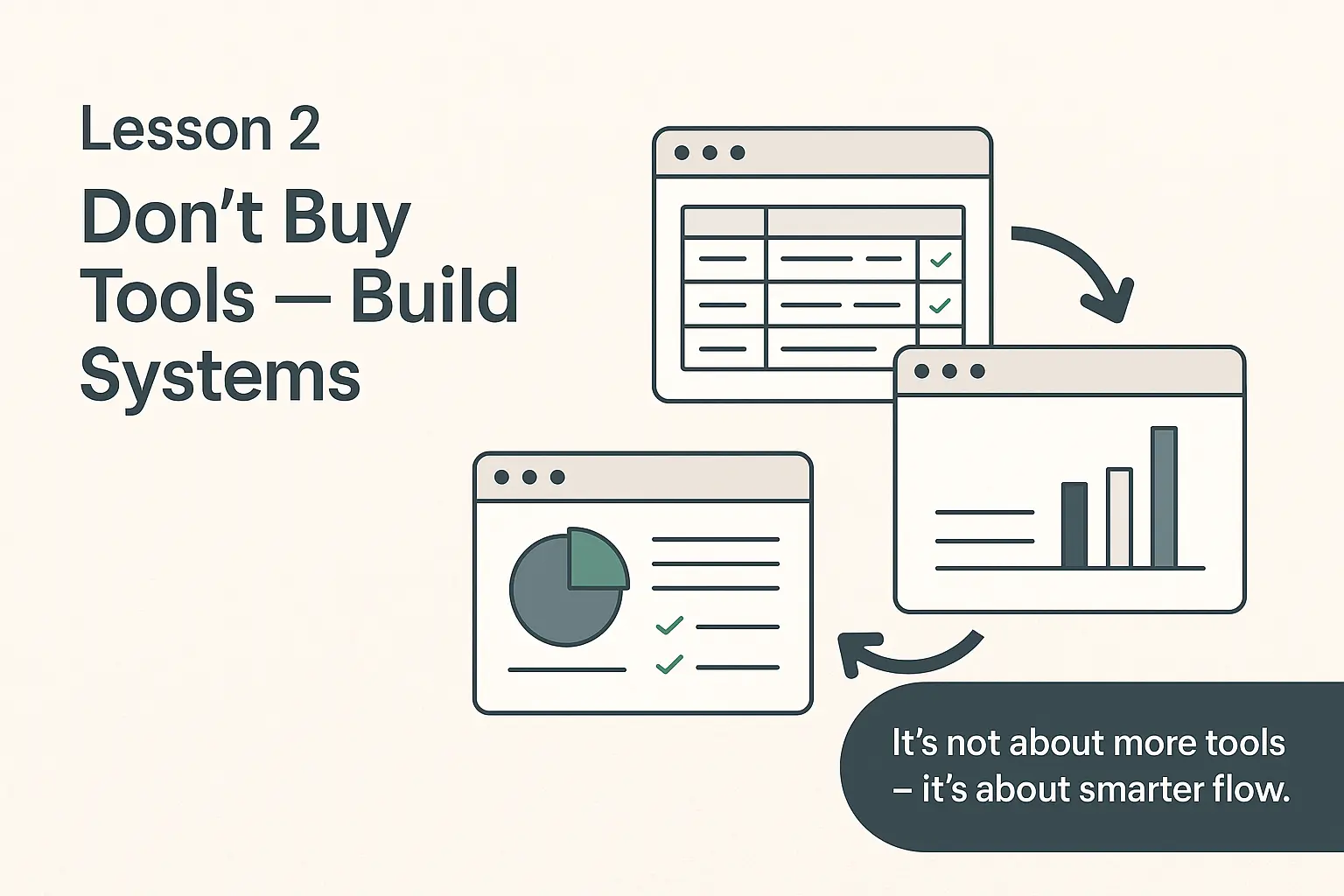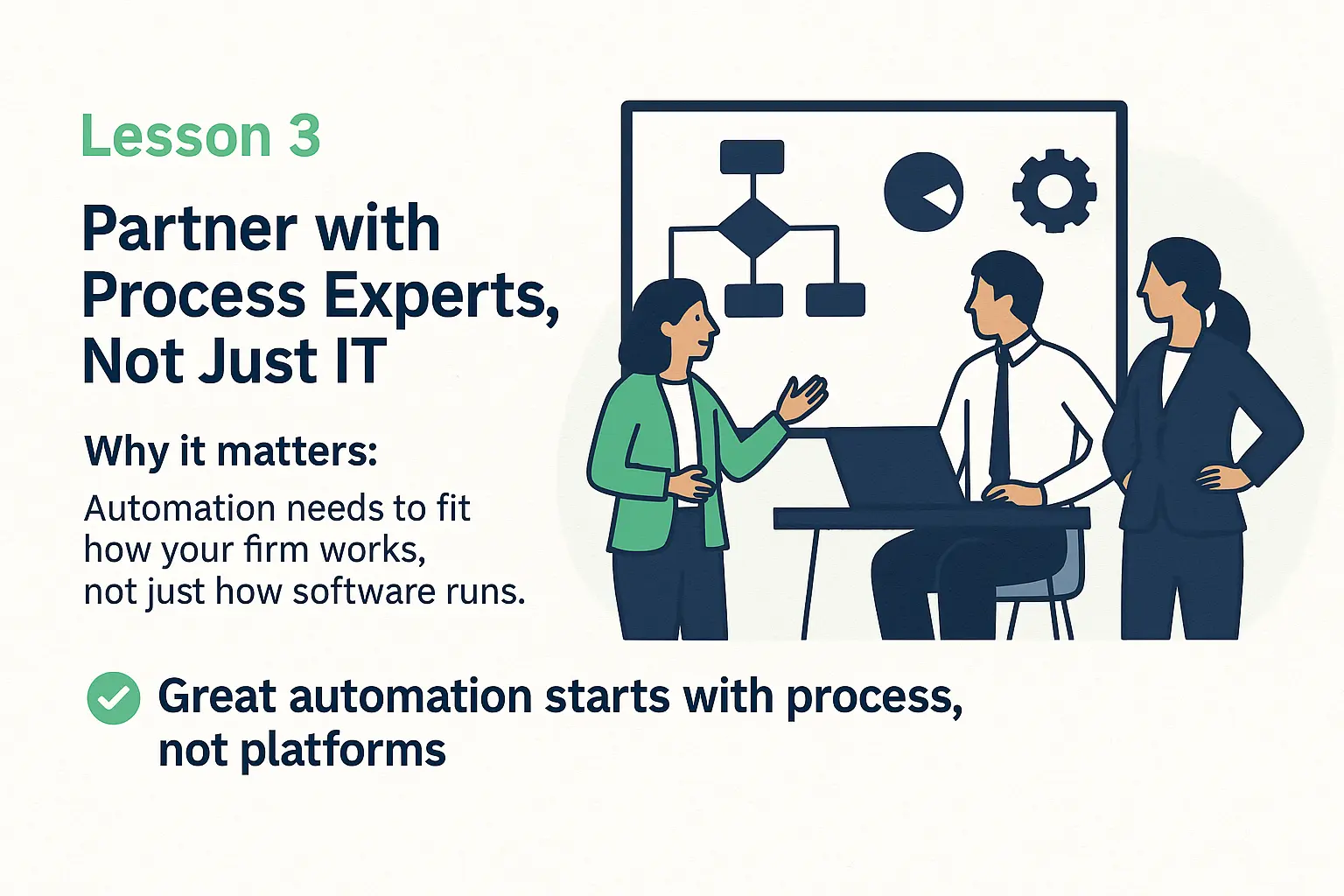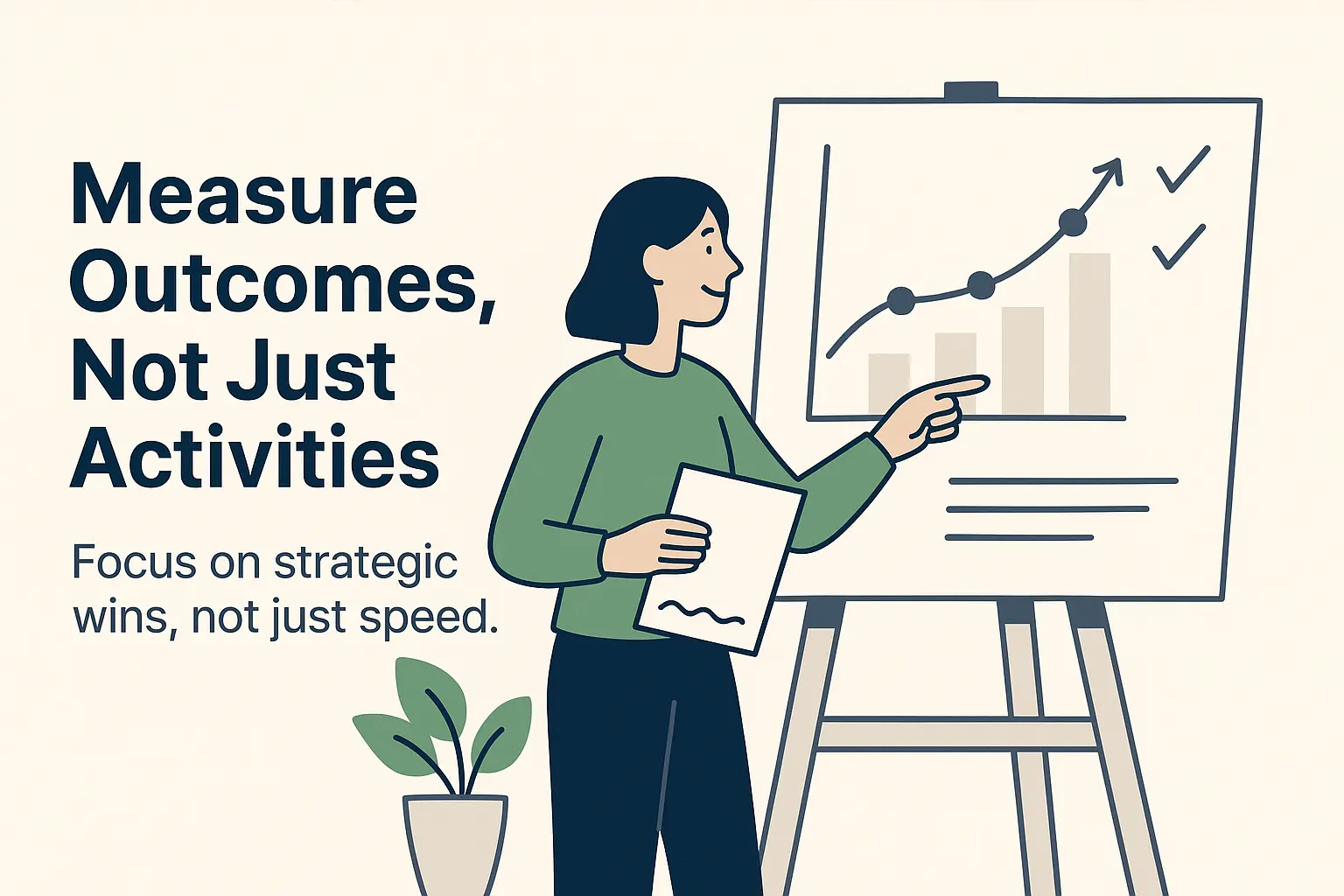How firms succeed (or fail) with automation—and what you can learn.
Why Automation Projects Often Fail in CPA Firms
Automation holds enormous promise for CPA firms. It can eliminate tedious manual work, reduce error rates, and unlock new capacity for client service. Yet for all its potential, many firms still struggle to get automation right.
In our work with more than 30 CPA firms, we’ve seen firsthand what makes the difference between automation that accelerates your practice and initiatives that stall out, waste time, or create new complexities.
Below are the four most important lessons we’ve learned by helping firms implement automation intelligently and sustainably.
Lesson 1: Start Small, Win Fast

The instinct to automate everything at once is understandable. But in reality, broad, unfocused initiatives often lead to stalled progress and disengaged teams.
The most successful firms begin with one or two high-impact, repetitive processes. These are areas where automation can quickly show tangible results:
- Reconciling time entries
- Cleaning up billing cycles
- Refreshing monthly reports
These early wins help validate the business case for automation. They also build internal support and reduce resistance to change. Rather than aiming for full transformation on day one, successful firms create a steady path to long-term impact.
Lesson 2: Don’t Just Buy Tools — Build Systems

Many firms already have the right tools in place—from general ledgers to practice management and reporting software. What they’re missing is connectivity.
Disconnected tools require staff to manually move data, resulting in errors, duplicated work, and frustrated teams. By contrast, the firms that succeed with automation focus on building systems:
- Integrate data flows across time, billing, GL, and dashboards
- Eliminate manual re-entry between platforms
- Establish consistent workflows across tools
Smart automation is about orchestration, not expansion. Adding more software doesn’t help if nothing talks to each other.
Lesson 3: Prioritize Process, Not Just Technology

Automation is not an IT-only project. The firms that thrive treat it as an operations initiative first, technology second.
Rather than focusing solely on what software can do, they begin with how the firm actually works day-to-day:
- Involve admin and operations staff in the design phase
- Map workflows based on real bottlenecks and pain points
- Choose partners who understand accounting firm dynamics
Solutions designed this way are far more likely to be adopted, evolve over time, and deliver lasting value.
Lesson 4: Measure What Matters

Successful automation is not just about doing things faster. It’s about achieving better outcomes for the firm.
That means measuring more than activity levels. Instead, leading firms track business-impact metrics such as:
- Time-to-bill
- Reduction in write-downs
- Client turnaround time
- Staff capacity freed up
This shift in focus — from efficiency to strategic results — distinguishes automation that appears impressive on paper from automation that truly transforms a firm.
Final Thoughts: Make Automation Work for Your Firm
Automation doesn’t have to be complicated. But it does have to be intentional. At Silver Sea Analytics, we’ve helped dozens of firms streamline their workflows, reduce manual effort, and unlock new value. If you’re stuck, skeptical, or just getting started, let’s talk about what sustainable automation could look like for your practice.
📩 Reach out at silversea-analytics.com
✨ Silver Sea Analytics — Your innovation GPS.

